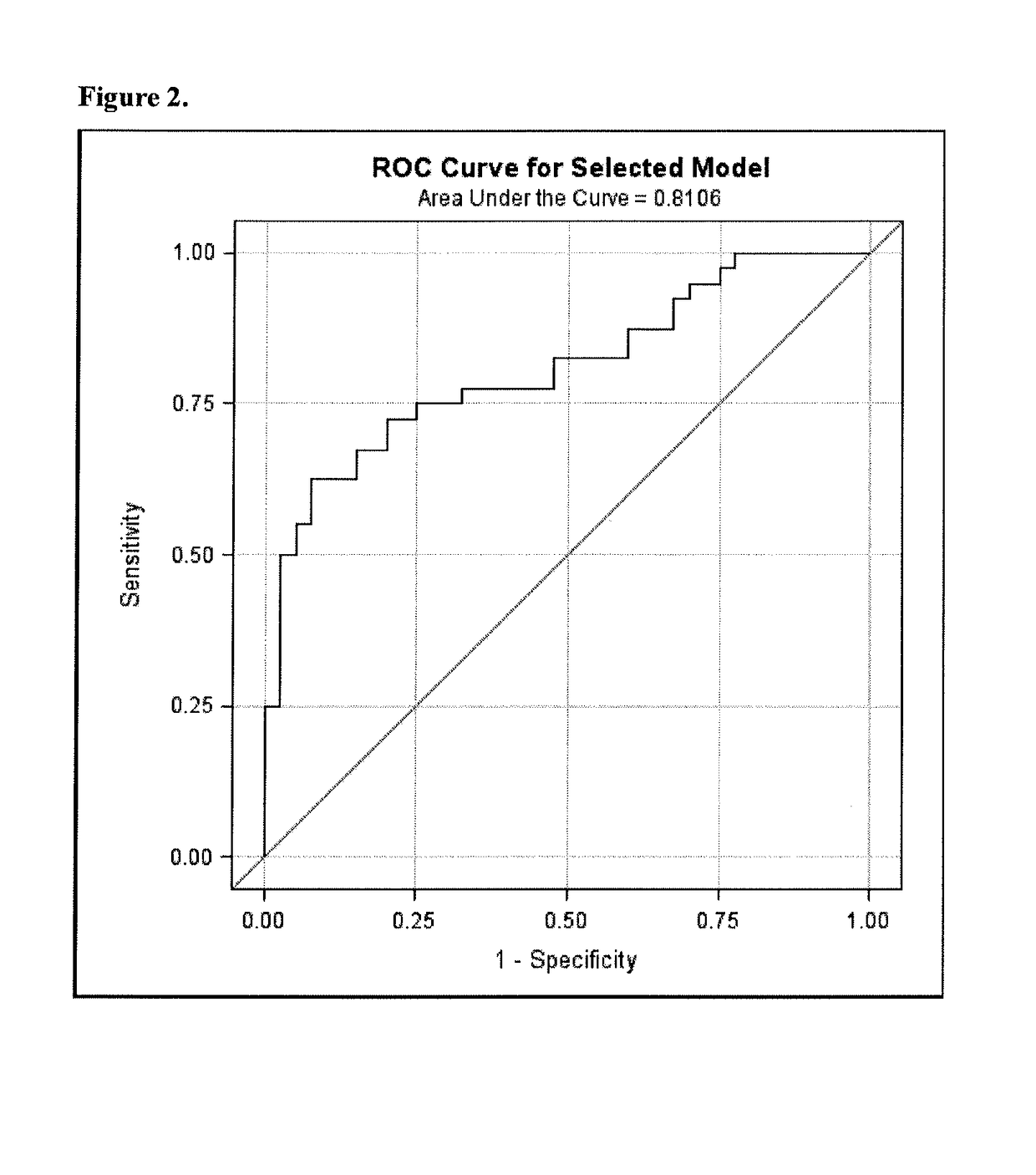Biomarkers for sensitive detection of statin-induced muscle toxicity
a biomarker and statin technology, applied in the field of biomarkers for sensitive detection of statin-induced muscle toxicity, can solve the problems of life-threatening condition, severe muscle toxicity, and limit the large clinical and socio-economic benefits of these agents, and achieve the effect of increasing weigh
- Summary
- Abstract
- Description
- Claims
- Application Information
AI Technical Summary
Benefits of technology
Problems solved by technology
Method used
Image
Examples
example 1
Materials and Methods
[0098]For this study the subjects were selected from a cohort of patients presenting clear muscular intolerance phenotypes determined according to strict criteria.
[0099]The inclusion criteria for the subjects were the following:[0100]Written informed consent to participate in the study;[0101]Men or women aged 18 years or older;[0102]Documentation of statin-related muscle toxicity manifested by either:[0103]muscle pain that occurs during statin treatment and stops after withdrawal or reduction in dosage; or[0104]muscle pain that starts after initiation of statin treatment and persists while still being treated in patients in whom it is considered not possible to stop statin administration; or[0105]muscle pain that occurs while patient is being treated with a statin and clearly appears to be statin-related in the opinion of his / her physician; or[0106]patient in whom lipid-lowering regimen is changed from a statin to ezetimibe because of intolerance to statins due ...
PUM
| Property | Measurement | Unit |
|---|---|---|
| temperature | aaaaa | aaaaa |
| volume | aaaaa | aaaaa |
| spray voltage | aaaaa | aaaaa |
Abstract
Description
Claims
Application Information
 Login to View More
Login to View More - R&D
- Intellectual Property
- Life Sciences
- Materials
- Tech Scout
- Unparalleled Data Quality
- Higher Quality Content
- 60% Fewer Hallucinations
Browse by: Latest US Patents, China's latest patents, Technical Efficacy Thesaurus, Application Domain, Technology Topic, Popular Technical Reports.
© 2025 PatSnap. All rights reserved.Legal|Privacy policy|Modern Slavery Act Transparency Statement|Sitemap|About US| Contact US: help@patsnap.com



